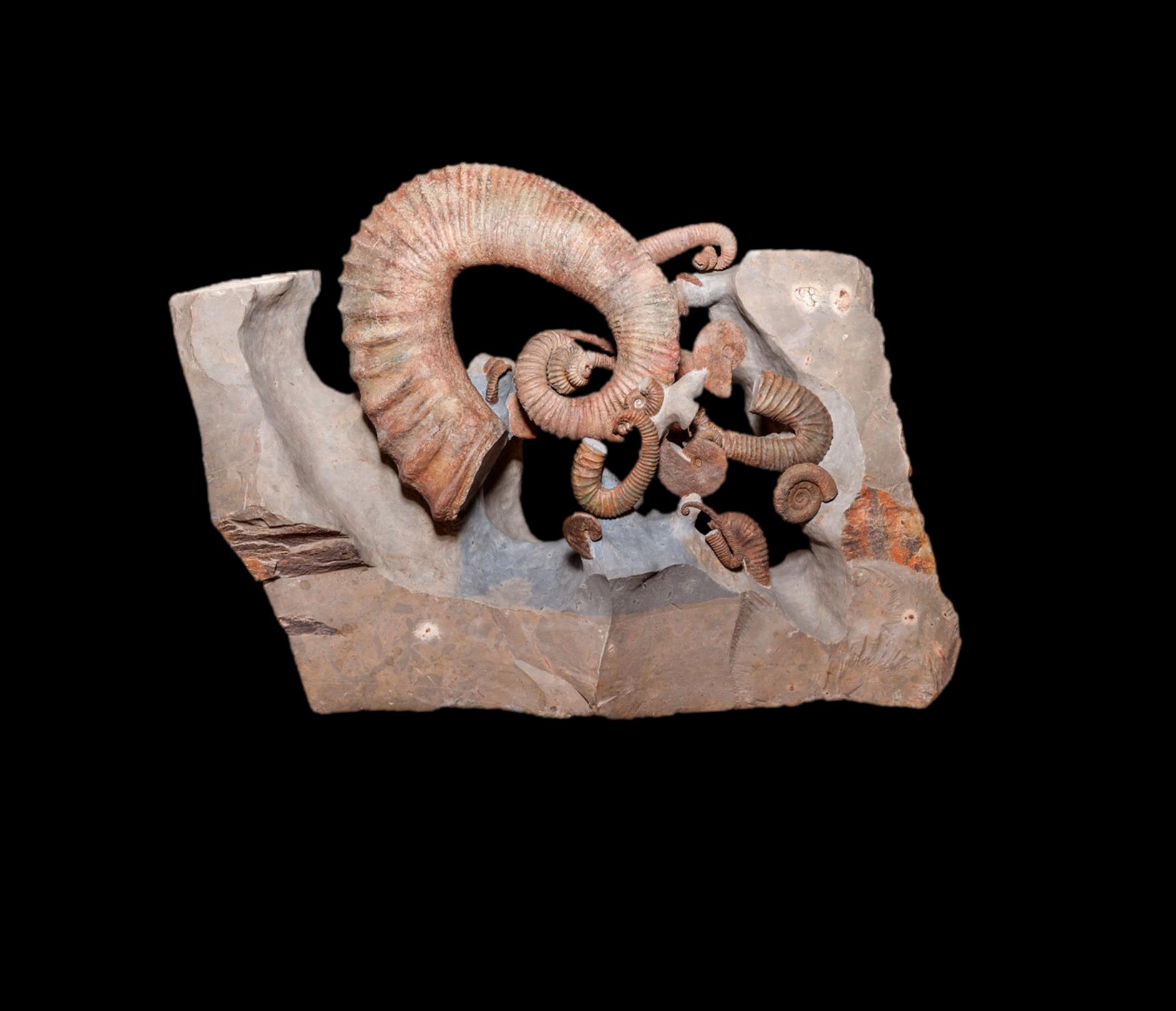|
Parahoplitidae
Parahoplitidae is an extinct family of Cretaceous Ammonitida, ammonites with stoutly ribbed, compressed, generally involute shells lacking or with only minor tubercles included in the Deshayestoidea, a superfamily now separated from the Hoplitacaceae. Subfamilies and genera The family contains two subfamilies and eight genera. * Deshayesitinae Stoyanow, 1949 ** ''Deshayesites'' Kazansky, 1914 ** ''Dufrenoyia'' Kilian and Reboul, 1915 ** ''Diadochoceras'' Hyatt, 1900 ** ''Hypacanthoplites'' Spath, 1923 * Parahoplitinae Spath, 1922 ** ''Kazanskyella'' Stoyanow, 1949 ** ''Parahoplites'' Anthula, 1899 ** ''Sinzowiella'' Stoyanow, 1949 ** ''Parahoplitoides'' Spath, 1922 References * Arkell ''et al.'', 1957. Mesozoic Ammonoidea. Treatise on Invertebrate Paleontology, Part L Ammonoidea. Geological Soc of America and University of Kansas press. Ancyloceratina Ammonitida families {{ammonitida-stub ... [...More Info...] [...Related Items...] OR: [Wikipedia] [Google] [Baidu] |
Dufrenoyia
''Dufrenoyia'' is an extinct genus of Cretaceous Ammonitida, ammonites included in the family Parahoplitidae. These fast-moving nektonic carnivores lived in the Cretaceous period (Aptian age).Sepkoski, JacSepkoski's Online Genus Database – Cephalopoda/ref> The type species of the genus is ''Ammonites dufrenoyi''. Species * ''Dufrenoyia codazziana'' Karsten, 1886 * ''Dufrenoyia dufrenoyi'' d'Orbigny, 1840 * ''Dufrenoyia furcata'' Sowerby, 1836 * ''Dufrenoyia justinae'' Hill, 1893 Distribution Fossils of species within this genus have been found in the Cretaceous sediments of Germany, Mexico, Morocco, Spain, the United Kingdom, United States, Colombia and Venezuela. References * Arkell ''et al.'', 1957. Mesozoic Ammonoidea. Treatise on Invertebrate Paleontology, Part L Ammonoidea. Geological Soc of America and University of Kansas press. Ammonitida genera Ancyloceratina Cretaceous ammonites Early Cretaceous ammonites of North America {{ammonitida-stub ... [...More Info...] [...Related Items...] OR: [Wikipedia] [Google] [Baidu] |
Ancyloceratina
The Ancyloceratina were a diverse suborder of ammonite most closely related to the ammonites of order Lytoceratina. They evolved during the Late Jurassic but were not very common until the Cretaceous period, when they rapidly diversified and became one of the most distinctive components of Cretaceous marine faunas. They have been recorded from every continent and many are used as zonal or index fossils. The most distinctive feature of the majority of the Ancyloceratina is the tendency for most of them to have shells that are not regular spirals like most other ammonites. These irregularly-coiled ammonites are called heteromorph ammonites, in contrast to regularly coiled ammonites, which are called homomorph ammonites. Biology The biology of the heteromorph ammonites is not clear, but one certainty is that their uncoiled shells would have made these forms very poor swimmers. Open shells, particularly ones with spines and ribs, create a lot of drag; but more importantly, the orient ... [...More Info...] [...Related Items...] OR: [Wikipedia] [Google] [Baidu] |
Parahoplitinae
Parahoplitinae is an extinct subfamily of cephalopods belonging to the Ammonite family Parahoplitidae Parahoplitidae is an extinct family of Cretaceous Ammonitida, ammonites with stoutly ribbed, compressed, generally involute shells lacking or with only minor tubercles included in the Deshayestoidea, a superfamily now separated from the Hoplitaca .... References * http://paleodb.org/cgi-bin/bridge.pl?action=checkTaxonInfo&taxon_no=84971&is_real_user=1 Ancyloceratina Protostome subfamilies {{ammonitida-stub ... [...More Info...] [...Related Items...] OR: [Wikipedia] [Google] [Baidu] |
Treatise On Invertebrate Paleontology
The ''Treatise on Invertebrate Paleontology'' (or ''TIP'') published by the Geological Society of America and the University of Kansas Press, is a definitive multi-authored work of some 50 volumes, written by more than 300 paleontologists, and covering every phylum, class, order, family, and genus of fossil and extant (still living) invertebrate animals. The prehistoric invertebrates are described as to their taxonomy, morphology, paleoecology, stratigraphic and paleogeographic range. However, taxa with no fossil record whatsoever have just a very brief listing. Publication of the decades-long ''Treatise on Invertebrate Paleontology'' is a work-in-progress; and therefore it is not yet complete: For example, there is no volume yet published regarding the post-Paleozoic era caenogastropods (a molluscan group including the whelk and Common periwinkle, periwinkle). Furthermore, every so often, previously published volumes of the ''Treatise'' are revised. Evolution of the proje ... [...More Info...] [...Related Items...] OR: [Wikipedia] [Google] [Baidu] |
France
France (), officially the French Republic ( ), is a country primarily located in Western Europe. It also comprises of Overseas France, overseas regions and territories in the Americas and the Atlantic Ocean, Atlantic, Pacific Ocean, Pacific and Indian Oceans. Its Metropolitan France, metropolitan area extends from the Rhine to the Atlantic Ocean and from the Mediterranean Sea to the English Channel and the North Sea; overseas territories include French Guiana in South America, Saint Pierre and Miquelon in the North Atlantic, the French West Indies, and many islands in Oceania and the Indian Ocean. Due to its several coastal territories, France has the largest exclusive economic zone in the world. France borders Belgium, Luxembourg, Germany, Switzerland, Monaco, Italy, Andorra, and Spain in continental Europe, as well as the Kingdom of the Netherlands, Netherlands, Suriname, and Brazil in the Americas via its overseas territories in French Guiana and Saint Martin (island), ... [...More Info...] [...Related Items...] OR: [Wikipedia] [Google] [Baidu] |
Spath
Spath, is a small village north of Uttoxeter, Staffordshire, England. For population details as taken at the 2011 census see Uttoxeter Rural. Spath is on the River Tean and is divided from Uttoxeter by the A50 road. In UK railway history, Spath is notable as the site of the first automatic (i.e. train-operated) level crossing in the United Kingdom (AHBC: automatic half barrier crossing), which came into operation on 5 February 1961. The railway closed four years later, and has now been dismantled, the road which crossed it via the automatic crossing is now gated and only leads to a farm and there is no remaining visible sign of the crossing. Spath was the original home of Stevensons of Uttoxeter Stevensons of Uttoxeter was a bus company that operated in Staffordshire from 1926 to 1997. History On 11 September 1926, John Stevenson commenced operating a bus service from Uttoxeter to Burton upon Trent. In 1971, the business passed to Jo ..., a bus company that celebrated ... [...More Info...] [...Related Items...] OR: [Wikipedia] [Google] [Baidu] |
